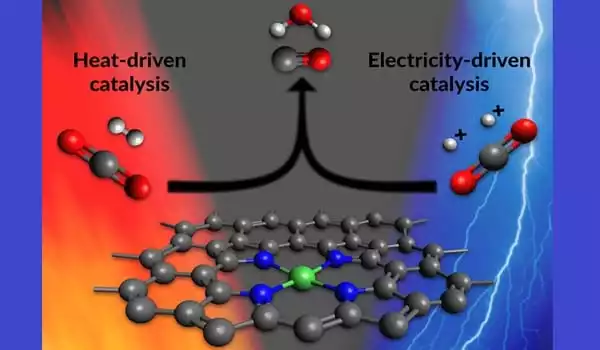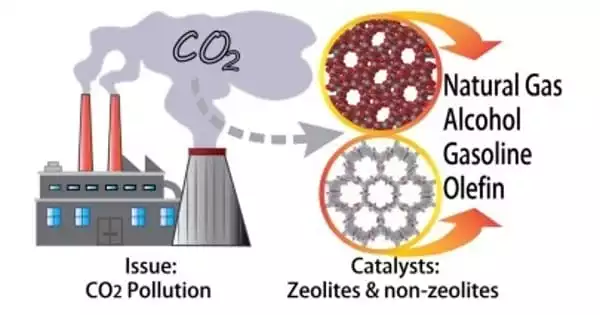As scientists seek ways to reduce the amount of carbon dioxide in the atmosphere, a number of experiments have focused on using this gas to create usable fuels. Such experiments have yielded both hydrogen and methanol, but the processes frequently involve a number of intricate steps and methods. Using a combination of high-intensity light, concentrated heat, and high pressure, researchers have demonstrated a one-step conversion of carbon dioxide and water directly into a simple and inexpensive liquid hydrocarbon fuel.
Researchers used a supercomputer to identify a group of “single-atom” catalysts that could play a key role in combating global warming by converting carbon dioxide into fuel.
An international study led by Associate Professor Liangzhi Kou from QUT’s Centre for Materials Science identified six metals (nickel, niobium, palladium, rhenium, rhodium, zirconium) that were found to be effective in a reaction that can convert carbon dioxide into sustainable and clean energy sources.
The goal of tackling global warming by turning carbon dioxide into fuel could be one step closer, with researchers using a supercomputer to identify a group of ‘single-atom’ catalysts that could play a key role.
Professor Aijun Du, Professor Yuantong Gu, and Dr. Lin Ju from QUT participated in the study, which was published in Nature Communications. Professor Kou explained that the research was carried out by modeling the experiments using the Australian National University’s National Computational Infrastructure, looking at how single atoms of metals would react with two-dimensional pieces of “ferroelectric” materials.
The researchers believe that in the future, parabolic mirrors could be used to concentrate sunlight on the catalyst in the reactor, providing both the necessary heating and photo-excitation for the reaction to occur without the need for other external power sources. The team also believes that any excess heat generated in this manner could be used to power other aspects of a solar fuels facility, such as material separation and water purification.

Ferroelectric materials have a positive charge on one face and a negative charge on the other, and when a voltage is applied, this polarization can be reversed. According to the theoretical modeling, adding an atom of the catalyst metal to the ferroelectric material resulted in the conversion of the greenhouse gas into the desired chemical fuel. When the polarity is reversed, the state is retained to act as a catalyst in the conversion of carbon dioxide.
Professor Kou stated that while single-atom catalysts for carbon dioxide reduction were proposed a decade ago, this research advances the field significantly. “We developed a special chemical catalyst that can convert CO2 into the desired chemical fuels.” “A feasible approach can be used to control conversion efficiency,” Professor Kou said. “It means that for the first time, we have developed the ability to speed up or slow down, and even turn off the chemical reaction.”
“Because carbon dioxide is the primary cause of global warming due to the greenhouse effect, converting it into chemical fuels is not only important for our environment but also helpful in resolving the energy crisis.” According to Dr. Ju, the study’s first author, the research work provided guidance for the design of novel catalysts, which could have a significant impact on the chemical industry.
According to Professor Kou, the long-term goal of this research is to find ways to convert carbon dioxide into clean energy sources. According to him, the findings of this study could eventually lead to a method of adding a coating to engines or industrial systems that converts carbon dioxide rather than releasing more of the gas into the atmosphere. Researchers from QUT’s School of Mechanical, Medical, and Process Engineering, as well as the School of Chemistry and Physics, participated in the study.
Though the coronavirus pandemic has had a significant impact on the aviation industry, with passenger flights dropping by up to 90% as countries restrict travel, the long-term viability of large-scale air travel has been called into question by climate campaigners, who argue that flying is incompatible with emissions targets. With large electric passenger aircraft still many years away from commercialization, carbon offset schemes have been the best option for long-distance travelers concerned about their carbon footprint. Carbon-neutral flight cannot come soon enough for the aviation industry, avid travelers, and Instagrammers.
















